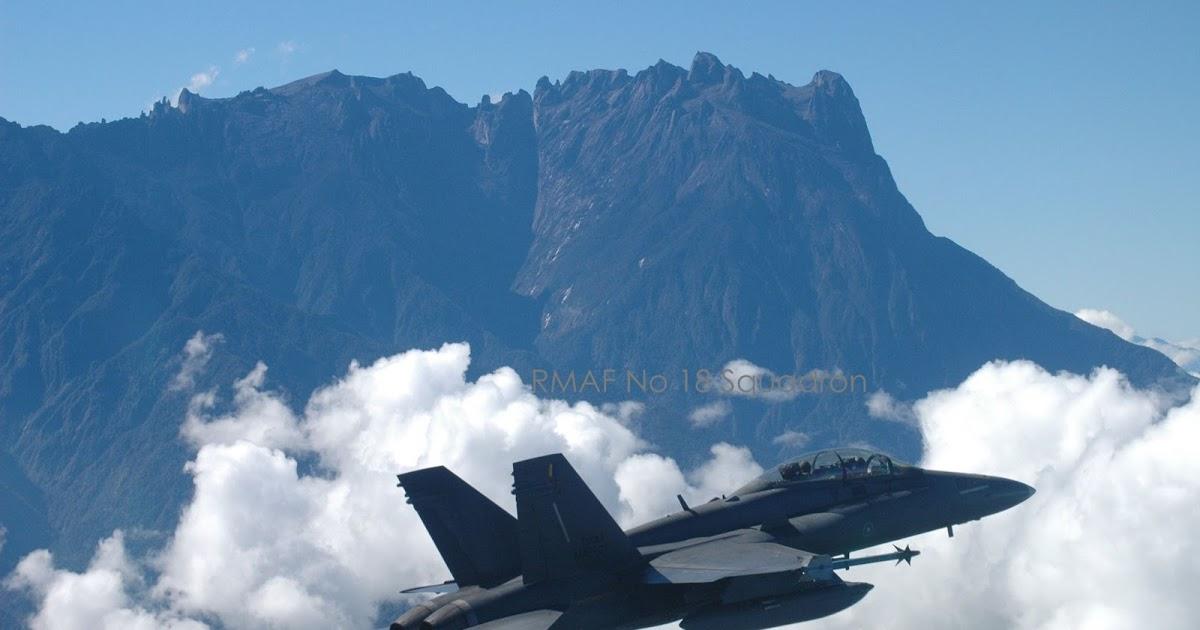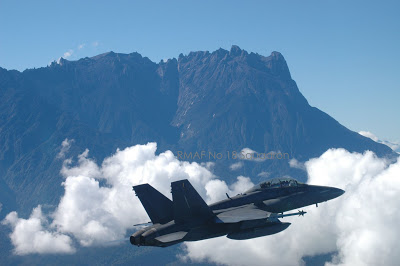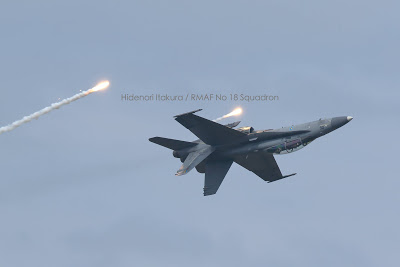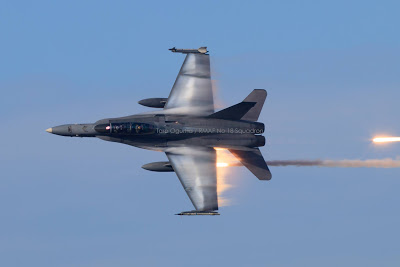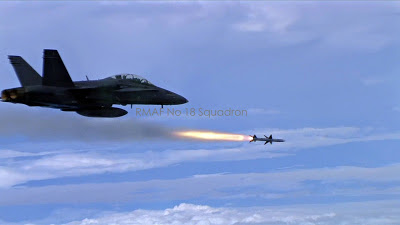26 Juli 2017
RMAF F/A-18D (all photos : RMAF No 18 squadron)
More lethal sting for RMAF’s Hornets
“STICK me in this jet, and I’ll take her anywhere,” said a Royal Malaysian Air Force F/A-18D Hornet ‘driver’.”
The pilot’s confidence in the much-vaunted strike fighter’s ability to handle modern threats is due to the fact that the RMAF’s 20-year-old fleet recently underwent a comprehensive upgrade that gives it an even more lethal “sting”. The best just got better.
The programme, carried out in phases, was to enhance the Hornet’s combat effectiveness in its primary tasking in the air-to-air and air-to-ground roles.
This included the integration of four primary elements — Boeing’s Joint Helmet-Mounted Cueing System (JHMCS), the super-agile, thrust-vectoring AIM-9X Sidewinder heat-seeking air-to-air missile, Global Positioning System (GPS) guidance kits for the GBU-31, -32, -38 and -54 Joint Direct Attack Munitions (JDAM) “smart” bombs, and the Advanced Targeting Forward-Looking Infrared (ATFLIR) pods for the strike mission.
Air force chief General Datuk Seri Affendi Buang told the New Straits Times that the upgrades had given RMAF Hornets a “quantum leap in capability”.
“The upgrades will ensure the Hornet’s dominance in the modern battle space against a broad spectrum of airborne and surface threats for years to come,” said Affendi, who added that the upgrades put RMAF’s Hornets on par with Boeing’s F/A-18E/F Super Hornet Block 1.
On Nov 28, 2011, Boeing was awarded a firm-fixed price order for “Engineering Change Proposal 618” (ECP 618) kits for all RMAF Hornets under the United States’ Foreign Military Sales (FMS) programme. The contract included training for ECP 618 and ECP 624, and the installation of other systems that made up the Malaysian upgrade.
Initial work was done at the Boeing plant in St Louis, Missouri, while subsequent airframes were modded at 18 Squadron’s home base — the “Hornet’s Nest” — in RMAF Butterworth. Work on the last airframe was completed in April 2015.
At the heart of the upgrade to the “25X standard” was the introduction of the JHMCS. 18 Squadron, The Mighty Hornets, received the helmets in batches, beginning 2014.
JHMCS is a modern helmet that projects all the flight and targeting information the pilot needs onto his visor. The pilot then aims and locks the aircraft’s sensors and weapons just by looking at the target.
Coupled with the AIM-9X Sidewinder, jhmcs gives Hornet jocks a true, high off-boresight, or “snap-shooting” capability in a dogfight.
The Mighty Hornets commanding officer, Colonel Koey Tang Chai, said the JHMCS gives his pilots a huge advantage in the acquisition and prosecution of targets, both air-to-air and air-to-surface.
Koey, whose callsign is “Mickey”, said in a “slashing” or turning fight, all his pilots have to do is look at the target, lock the weapon system and fire the missile.
“The ‘all-aspect’, thrust-vectoring AIM-9X means that I don’t even have to manoeuvre my jet to get behind an enemy aircraft to lock onto his heat signature.
“In a turning fight, all I have to do is look at the target, get a lock on him, wait for the ‘shoot’ cue, squeeze the trigger and he’s toast,” said Mickey.
To attack a ground target, pilots can acquire the target with a sensor and note its location on the helmet display. Alternatively, pilots can use the helmet display to cue sensors and weapons to a ground target.
In the strike role, the Hornet’s traditional weapon of choice used to be the optically- or laser-guided Paveway series of bombs. While accurate, the delivery is often hampered by cloud or smoke cover over the target.
To solve this problem, the RMAF opted for the integration of the JDAM into the Hornet’s bag of tricks. The air force now has, in its inventory, the whole series of JDAMs — the GBU-31, -32, -38 and the GBU-54 — which is optimised for moving targets.
JDAM is a guidance kit that converts unguided “dumb” bombs into all-weather “smart” munitions. JDAM-equipped bombs are guided by an integrated inertial guidance system coupled to a GPS receiver.
JDAM is a “bolt-on” guidance package that converts unguided gravity bombs into precision-guided munitions (PGM).
The key components of the system consist of a tail section with aerodynamic control surfaces, a (body) strake kit, and a combined inertial guidance system and a GPS guidance control unit.
“The guidance kits for the JDAMs give my boys phenomenal bombing accuracy. JDAM gives us pinpoint weapons delivery capability, day or night, and in any weather. We can’t miss.”
(New Straits Times)


